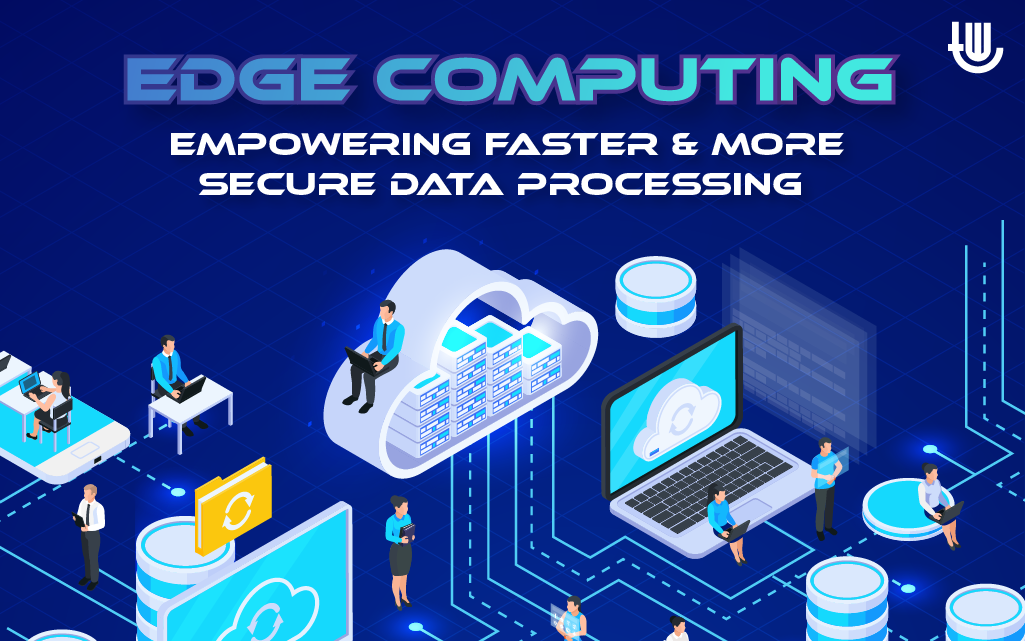
As the world becomes increasingly interconnected with the Internet of Things (IoT) and the demand for instant access to information rises, traditional cloud computing approaches face limitations in delivering the required speed and reliability. This is where “Edge Computing” emerges as a game-changer, offering a powerful and innovative solution to process data closer to the source – the edge of the network. Edge computing enables faster response times, reduced latency, and enhanced data security, making it a critical technology for the era of IoT and real-time applications.
As edge computing gains momentum across various industries, it empowers businesses and organizations with the ability to harness the full potential of their data while ensuring efficiency, cost-effectiveness, and better user experiences.
How Edge Computing Works
The architecture of edge computing is designed to optimize data flow and reduce latency. Unlike traditional cloud computing, where data is sent to centralized data centers for processing and analysis, edge computing distributes the workload to edge nodes, which can be located within close proximity to the data source.
When a data-generating event occurs, such as a sensor capturing real-time data or a user interacting with a smart device, the data is immediately processed locally at the edge node. This localized processing allows for rapid decision-making without the need to send the data to a distant cloud server and wait for a response.
Furthermore, edge computing does not replace cloud computing but complements it. While some data is processed at the edge, a portion of it may still be sent to the cloud for more extensive analysis. This hybrid approach strikes a balance between the benefits of edge computing’s low latency and cloud computing’s extensive processing capabilities.
Use Cases and Applications
The adoption of edge computing is rapidly expanding, as industries across the board recognize its potential to revolutionize data processing and enhance operational efficiency. Here are some key use cases and applications where edge computing is proving to be a transformative force:
- Autonomous Vehicles: As self-driving cars rely on an array of sensors and data sources to navigate and make critical decisions, edge computing enables localized processing of sensor data. This capability ensures swift responses, enhances safety, and reduces the dependence on constant communication with centralized servers, making autonomous vehicles more reliable and secure.
- Retail and Customer Experience: Edge computing is transforming the retail industry by enabling personalized customer experiences. Retailers can analyze customer data in real-time at the edge, allowing for instant recommendations and customized offers. This personalized approach enhances customer satisfaction, fosters brand loyalty, and ultimately drives sales.
- Online Gaming: Reduced latency and improved responsiveness enable smoother gameplay, particularly in live dealer games or real-time multiplayer games like online poker. Edge computing also enhances security in iGaming, as sensitive data can be processed locally, minimizing the risk of data breaches. Platforms like casinosbonusca now consider the security of players financial information to determine their ranking of best online casinos, testifying the importance of edge computing in resolving these issues.
- Healthcare and Telemedicine: Edge computing is revolutionizing the healthcare sector by facilitating remote patient monitoring and telemedicine. Medical devices equipped with edge computing capabilities can process patient data on-site, ensuring timely interventions and reducing the need for constant data transmission to centralized servers. This improves patient outcomes, especially in critical situations where real-time monitoring is essential.
The Future of Edge Computing
While edge computing holds immense potential, its widespread adoption is not without challenges.
Edge computing heavily relies on network connectivity. In areas with limited or unstable network connectivity, data processing at the edge may be impacted, leading to delays and disruptions. And as the number of edge devices grows, managing and scaling edge computing infrastructure can become complex. Businesses also must carefully weigh the costs against the potential benefits to determine the feasibility of edge computing solutions.
But the actual potential of Edge Computing will outweigh the disadvantages. One of the key trends is the integration of artificial intelligence (AI) and machine learning (ML) capabilities. This integration will lead to faster response times, improved data insights, and enhanced autonomous decision-making.
5G’s high bandwidth and low latency capabilities will complement edge computing, making it more efficient and reliable. The synergy between 5G and edge computing will revolutionize industries like autonomous vehicles, telemedicine, and smart cities.
With ongoing research and innovation, edge computing will continue to evolve and drive the next wave of digital transformation, reshaping industries and powering a connected, data-driven world.